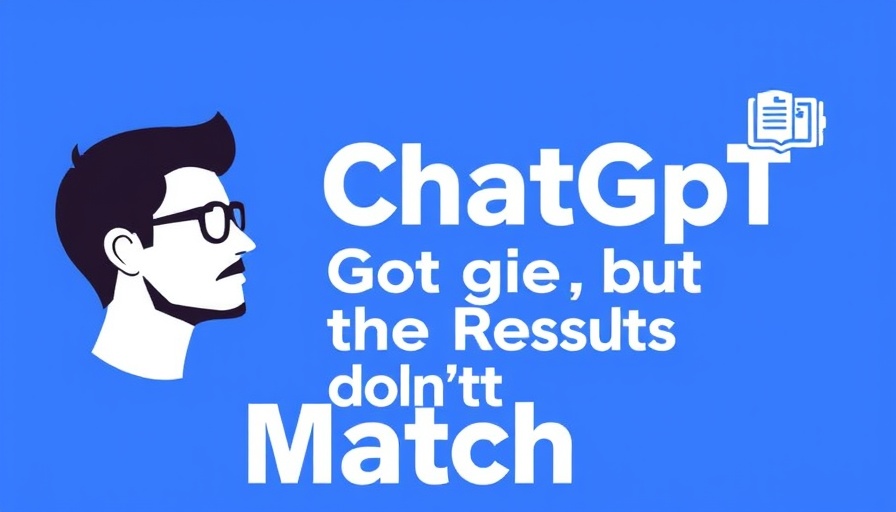
Understanding AI's Impact on Search Results
In recent months, the conversation surrounding AI tools like ChatGPT has intensified, especially concerning their relationship with traditional search engines like Google. Many small and medium-sized businesses that thrive on organic search visibility may find themselves questioning how AI impacts their digital marketing strategies. While it’s widely recognized that platforms like ChatGPT source information from established indices like Google, there’s a growing narrative suggesting these AI systems might act differently than typical search engines.
ChatGPT vs. Google: An Interesting Dissonance
Ahrefs recently conducted research indicating that while ChatGPT does scrape Google for URLs, the citations generated often do not directly match what you'd find through a standard search. This dissonance is notable, particularly when analyzing how AI generates its responses. In their multiple experiments, Ahrefs found a surprising low overlap between the URLs cited by ChatGPT and those appearing in Google search results for various types of queries, including long-tail, fan-out, and short-tail keywords.
The Challenges of Optimizing for AI Responses
What does this mean for small businesses? It implies that merely ranking well on Google may not suffice any longer. Small and medium-sized enterprises (SMEs) need to be aware of how AI shifts the goalposts in SEO. For example, even if a website is optimized for head terms that perform well on Google, there's no guarantee that these links will appear prominently in AI-generated outputs like those from ChatGPT. This layer of processing complicates the landscape for business owners looking to maintain their digital presence.
Deciphering Query Types and Their Impact on Citations
To further understand this phenomenon, it's essential to recognize the different types of queries that ChatGPT processes. For instance, 'informational' queries, which help users find facts, contrast sharply with 'transactional' queries aimed at making purchases. In analyzing a sample of 3,311 head terms across various intents—informational, commercial, transaction, and navigational—it's clear that how ChatGPT interprets and processes these queries directly affects which URLs are surfaced.
The Importance of Comprehensive Content Strategy
In light of these findings, small businesses should rethink their content strategy. Relying solely on SEO practices that once guaranteed visibility may leave a business vulnerable in this evolving landscape. A multi-faceted approach, blending robust content creation with an understanding of AI responses and human search intent, is vital. Engaging storytelling, answering questions in-depth, and ensuring high-quality user experience can help garner attention from both traditional search engines and AI systems.
What Does the Future Hold for Search and AI?
As AI continues to evolve, we may witness a more significant shift in how users interact with digital content. Businesses must stay ahead of this curve to remain competitive. The upcoming trends suggest a likelihood for enhanced personalization in search results, driven by AI learning from user behavior. Being adaptive and flexible with strategies will not only keep brands relevant but may also enhance their performance across AI interfaces.
Final Thoughts: Embrace the Change
As we delve deeper into an era where chatbots and AI-driven technologies play a crucial role in information retrieval, the understanding and adaptation of these changes are fundamental for small and medium-sized businesses. Recognizing the disconnection between traditional search engines and AI outputs may empower businesses to create even more refined and high-quality content that resonates with users across various platforms.
As you reflect on this new digital marketing landscape, consider how your business can adapt. Explore new strategies, invest in quality content, and stay informed on the latest trends. Let’s embrace the future of search together!
 Add Row
Add Row  Add
Add 



Write A Comment